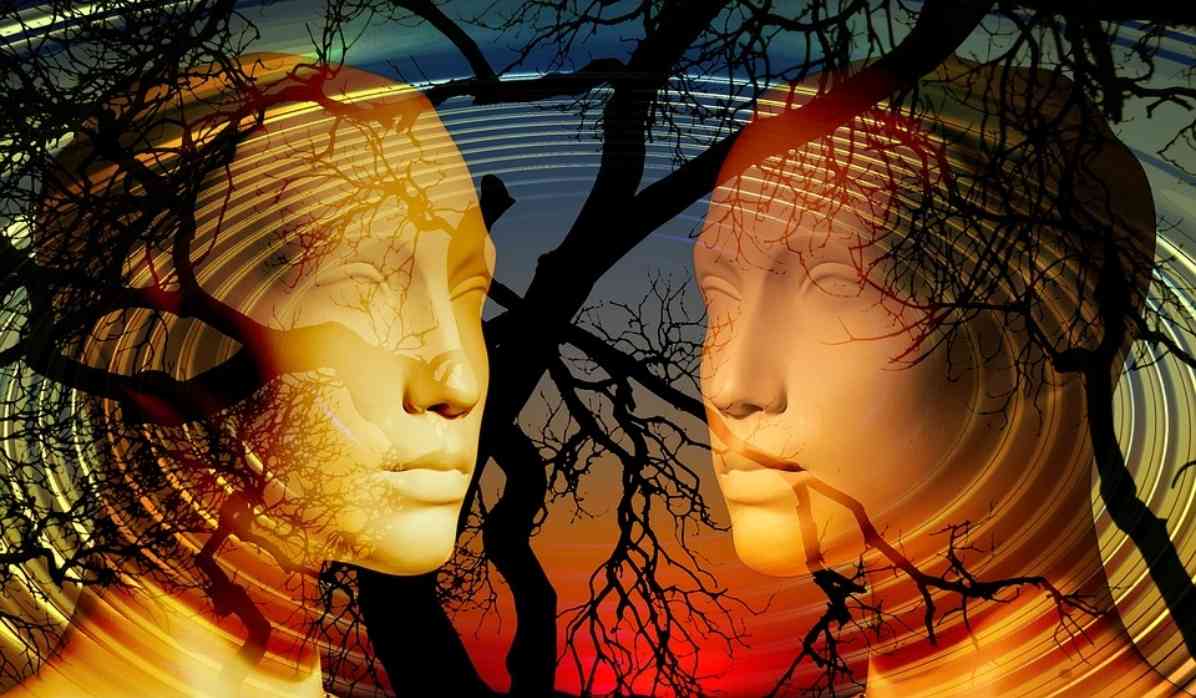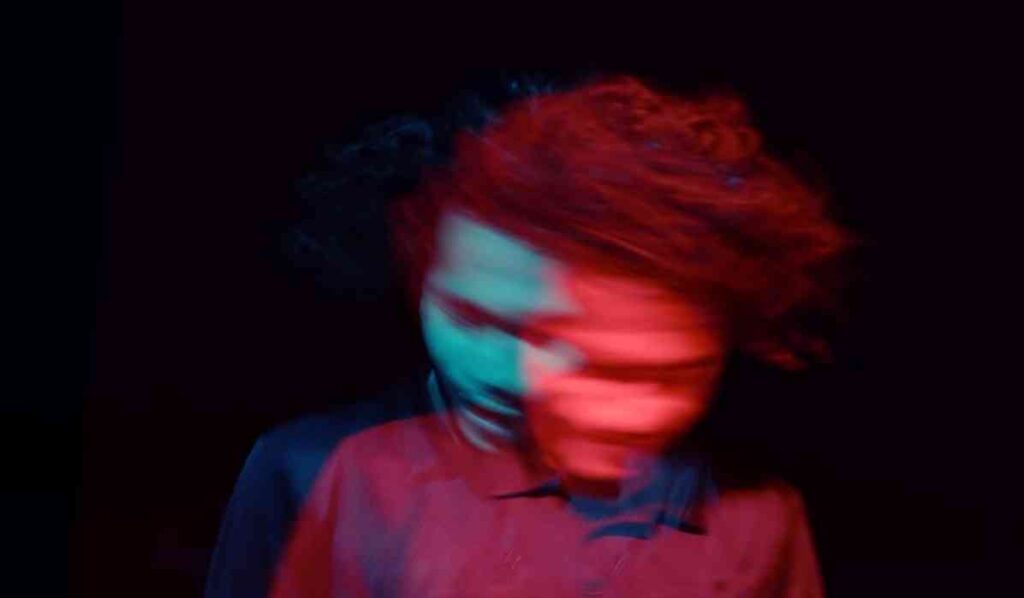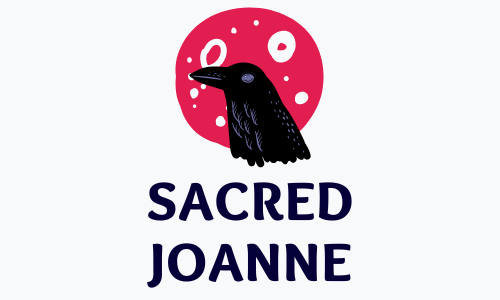The Addict Lover Archetype: Definition & Examples

In today’s article, we’ll dive into the captivating world of archetypes, exploring the transformation from the Addict Archetype into the Lover Archetype.
We’ll unravel the complexities of these psychological patterns and examine how they manifest in our lives.
Through understanding the Addict Archetype, the Lover Archetype, and their addictive counterparts, we’ll reveal the path to transcending addiction and embracing love in its truest form.
So, let’s embark on this enlightening journey together!
Defining The Addict Archetype

A pervasive pattern
The Addict Archetype is not just about substance abuse.
It reflects a broader pattern of compulsive behavior and can manifest in various aspects of life, such as work, relationships, and even seemingly harmless activities like shopping or social media.
Emotional avoidance
At its core, the Addict Archetype is driven by a desire to escape uncomfortable emotions.
By indulging in addictive behaviors, individuals avoid confronting feelings of pain, shame, or vulnerability, providing temporary relief from emotional distress.
Instant gratification
The Addict Archetype is characterized by a preference for short-term rewards over long-term benefits.
The addictive behaviors offer quick fixes that satisfy immediate cravings while neglecting the consequences that may arise in the future.
Loss of control
A person embodying the Addict Archetype often struggles with self-regulation, making it difficult to resist the allure of their addiction.
This lack of control can lead to a cycle of compulsive behaviors, ultimately exacerbating the addiction.
Impact on relationships
The Addict Archetype can strain personal connections as the individual’s focus becomes increasingly centered on their addiction.
Loved ones may feel neglected or hurt by the addict’s preoccupation, resulting in fractured relationships.
Identity distortion
Over time, the Addict Archetype can become deeply ingrained in a person’s sense of self.
The addiction takes center stage, defining the individual’s identity and making it challenging to see oneself outside of the addictive pattern.
Ritualistic behaviors
The Addict Archetype often involves rituals, routines, or patterns associated with the addictive behavior.
RELATED: Why Are Spiders Attracted to Me Spiritually?
These rituals can create a sense of comfort and familiarity, further reinforcing the addiction.
Secretiveness and shame
The Addict Archetype is frequently accompanied by feelings of shame, leading individuals to hide their addictive behaviors from others.
This secretiveness can create a sense of isolation and perpetuate the addiction cycle.
The illusion of power
Paradoxically, the Addict Archetype can provide a false sense of empowerment.
The addiction may temporarily boost self-esteem, create feelings of invincibility, or offer a sense of control in an otherwise chaotic life.
However, this power is illusory, as the addiction ultimately dominates the individual.
Spiritual disconnection
The Addict Archetype often leads to a disconnection from one’s spiritual self.
RELATED: Crying Yourself To Sleep? Benefits, Downfalls, and Causes Explained
As the addiction intensifies, individuals may lose touch with their core values, beliefs, or sense of purpose, leaving them feeling empty and unfulfilled.
Potential for growth
Despite the challenges associated with the Addict Archetype, there is an opportunity for transformation.
By recognizing and confronting the addictive patterns, individuals can embark on a journey of self-discovery, healing, and growth, ultimately transcending the archetype and embracing a more balanced way of living.
Addict Archetype Examples
Jesse Pinkman (Breaking Bad)
Jesse Pinkman, one of the main characters in Breaking Bad, struggles with drug addiction throughout the series.
His addiction affects not only his own life but also his relationships and decision-making, making him a prime example of the Addict Archetype.
Sherlock Holmes (various adaptations)
Sherlock Holmes, the famous detective created by Sir Arthur Conan Doyle, often displays an addiction to drugs and intellectual stimulation, using substances to alleviate his boredom when not solving cases.
Tony Stark (Iron Man)
In the “Demon in a Bottle” storyline from the Iron Man comics, Tony Stark battles alcohol addiction, showcasing the Addict Archetype’s struggle with substance abuse and its impact on personal and professional life.
Don Draper (Mad Men)
Don Draper, the central character in Mad Men, exemplifies the Addict Archetype through his addiction to alcohol, cigarettes, and sex.
His addictive behaviors lead to strained relationships and a deteriorating sense of self.
Tyrion Lannister (Game of Thrones)
Tyrion Lannister’s excessive drinking and frequent visits to brothels demonstrate his embodiment of the Addict Archetype, with his behaviors often serving as coping mechanisms for emotional pain and feelings of inadequacy.
Trainspotting (film and novel)
The characters in Trainspotting, a film and novel by Irvine Welsh, showcase various manifestations of the Addict Archetype through their struggles with drug addiction and the associated consequences.
Nurse Jackie (TV show)
Nurse Jackie, the titular character of the TV show, exemplifies the Addict Archetype through her addiction to prescription drugs, highlighting the impact of addiction on her professional and personal life.
RELATED: INFP 1w9: Personality Breakdown
Understanding The Lover Archetype

Embodiment of passion
The Lover Archetype represents a deep, passionate connection to life, embracing love, beauty, and sensuality.
This archetype cherishes authentic, intimate connections, not just romantically but also with friends, family, and even the world around them.
Emotional openness
Unlike the Addict Archetype, the Lover is emotionally available and willing to confront difficult feelings.
They understand that emotional vulnerability is a strength that enables deeper connections and promotes growth.
Appreciation of beauty
The Lover Archetype is deeply attuned to the beauty in their surroundings, whether it’s in nature, art, or people.
They find joy and inspiration in life’s aesthetic pleasures, often using creative outlets to express their appreciation.
Empathy and compassion
The Lover Archetype is marked by a strong sense of empathy, allowing them to understand and connect with others on a profound level.
They are compassionate, offering support and comfort to those in need.
Balance and harmony
The Lover Archetype seeks balance and harmony in all aspects of life.
They recognize the importance of nurturing mind, body, and spirit, striving for a holistic sense of well-being.
The power of presence
The Lover Archetype embodies the ability to be fully present in each moment, cultivating mindfulness and awareness.
This presence allows them to experience life more deeply and authentically.
Playfulness and spontaneity
The Lover Archetype embraces a sense of playfulness and spontaneity, finding joy in the unexpected and delighting in life’s little surprises.
RELATED: Why Do Animals and Babies Like Me? The Energy Behind It
They don’t take themselves too seriously and maintain a healthy sense of humor.
Commitment and loyalty
The Lover Archetype values commitment and loyalty, both in romantic relationships and other connections.
They understand that trust and reliability are the cornerstones of strong, lasting bonds.
Emotional intelligence
The Lover Archetype possesses a high degree of emotional intelligence, allowing them to navigate complex feelings and situations with grace and understanding.
They are skilled at recognizing and managing their own emotions, as well as empathizing with others.
Sensuality and pleasure
The Lover Archetype celebrates sensuality and the joy of physical pleasure.
They appreciate the importance of touch, taste, and other sensory experiences, using them as a means of deepening connections and enhancing life’s richness.
Growth and transformation
The Lover Archetype recognizes that personal growth and transformation are essential for a fulfilling life.
They are open to new experiences, willing to learn from mistakes, and continually striving to evolve and grow.
RELATED: Uranus Sextile North Node Synastry: Love & Friendships
Lover Archetype Examples
Romeo and Juliet (play)
Romeo and Juliet, the star-crossed lovers in Shakespeare’s play, epitomize the Lover Archetype through their passionate and tragic romance.
Elizabeth Bennet and Mr. Darcy (Pride and Prejudice)
Elizabeth and Darcy, the protagonists of Jane Austen’s Pride and Prejudice, exemplify the Lover Archetype as they navigate their evolving relationship, overcoming misunderstandings and societal expectations.
Jack Dawson and Rose DeWitt Bukater (Titanic)
Jack and Rose, the central characters in the film Titanic, embody the Lover Archetype through their deep emotional connection, despite their different social backgrounds.
Elio and Oliver (Call Me by Your Name)
Elio and Oliver, the main characters in the novel and film adaptation Call Me by Your Name, exemplify the Lover Archetype with their tender, sensual, and transformative summer romance.
The Notebook (film and novel)
Noah and Allie, the protagonists of The Notebook, portray the Lover Archetype through their enduring love story that spans decades and overcomes numerous obstacles.
Beauty and the Beast (various adaptations)
Belle and the Beast embody the Lover Archetype as they forge an unlikely connection that blossoms into love, transcending appearances and social barriers.
Outlander (TV show and book series)
Jamie and Claire, the central characters in the Outlander series, exemplify the Lover Archetype with their passionate and timeless romance, which transcends both time and space.
RELATED: Crying Yourself To Sleep? Benefits, Downfalls, and Causes Explained
The Addicted Lover Archetype: A Hybrid Pattern
The blended archetype
The Addicted Lover Archetype is a unique combination of the Addict and Lover Archetypes, reflecting both the passionate desire for connection and the compulsive patterns of addiction.
This complex hybrid can lead to intense, often turbulent experiences in relationships and other aspects of life.
Intense emotional experiences
The Addicted Lover Archetype is marked by a heightened emotional intensity, often manifesting as extreme highs and lows.
While this emotional depth can create powerful connections, it can also lead to emotional instability and volatility.
Fear of abandonment
The Addicted Lover Archetype may be driven by a deep-seated fear of abandonment, causing them to cling to relationships or other sources of connection.
This fear can result in unhealthy attachment patterns, potentially pushing loved ones away and perpetuating a cycle of loss and pain.
Codependency
The Addicted Lover Archetype can foster codependent relationships, where individuals become overly reliant on one another for emotional support, validation, or fulfillment.
RELATED: How To Stop Idealizing Someone: Tips, Reasons, and Dangers
This codependency can hinder personal growth and lead to feelings of entrapment or resentment.
Obsession and fixation
The Addicted Lover Archetype is prone to developing obsessive thoughts or fixations, particularly in romantic relationships.
They may become consumed by their partner, neglecting other aspects of life and losing a sense of self in the process.
Relationship addiction
The Addicted Lover Archetype may be susceptible to relationship addiction, compulsively seeking out new partnerships or staying in unhealthy relationships to avoid the discomfort of being alone.
This pattern can result in a string of short-lived, unsatisfying connections.
Self-sabotage
The Addicted Lover Archetype may unwittingly sabotage their own relationships, driven by a subconscious belief that they are unworthy of love or happiness.
This self-sabotage can manifest as infidelity, emotional withdrawal, or other destructive behaviors.
The allure of intensity
The Addicted Lover Archetype is often drawn to intense experiences, relationships, or individuals, seeking the thrill and excitement of passionate encounters.
While this intensity can be intoxicating, it can also lead to burnout and emotional exhaustion.
Romanticizing pain
The Addicted Lover Archetype may romanticize pain or suffering, associating it with depth and authenticity.
This mindset can perpetuate unhealthy patterns, as individuals may become addicted to the emotional turmoil that accompanies difficult relationships or experiences.
The struggle for balance
The Addicted Lover Archetype grapples with the challenge of finding balance between the passionate, loving aspects of the Lover Archetype and the compulsive, addictive tendencies of the Addict Archetype.
This struggle can lead to a roller coaster of emotions and experiences, making it difficult to achieve stability and harmony.
The potential for transformation
Despite the challenges posed by the Addicted Lover Archetype, there is hope for growth and healing.
By recognizing and addressing the underlying issues driving this hybrid pattern, individuals can work towards transcending the addictive behaviors and embracing a healthier, more balanced expression of love.
Addicted Lover Archetype Examples
Edward Cullen and Bella Swan (Twilight series)
Edward and Bella, the protagonists of the Twilight series, display the Addicted Lover Archetype through their intense, codependent relationship that borders on obsession.
Heathcliff and Catherine (Wuthering Heights)
Heathcliff and Catherine, the tortured lovers in Emily Brontë’s Wuthering Heights, embody the Addicted Lover Archetype with their passionate, destructive relationship marked by obsession and a refusal to let go of each other even in death.
Christian Grey and Anastasia Steele (Fifty Shades of Grey series)
Christian and Anastasia, the main characters in the Fifty Shades of Grey series, exemplify the Addicted Lover Archetype through their intense, codependent relationship marked by power dynamics and emotional turbulence.
Gatsby and Daisy (The Great Gatsby)
Gatsby’s obsessive love for Daisy in F. Scott Fitzgerald’s The Great Gatsby epitomizes the Addicted Lover Archetype, as his fixation on their past relationship and the idealized version of Daisy ultimately leads to his downfall.
Scarlett O’Hara and Rhett Butler (Gone with the Wind)
Scarlett and Rhett, the main characters in Margaret Mitchell’s Gone with the Wind, embody the Addicted Lover Archetype through their tumultuous, passionate, and often destructive relationship.
Bojack Horseman and various love interests (Bojack Horseman)
Bojack, the titular character of the animated series Bojack Horseman, displays the Addicted Lover Archetype in his pursuit of various love interests throughout the show, often engaging in unhealthy, self-destructive relationships.
Chuck Bass and Blair Waldorf (Gossip Girl)
Chuck and Blair, prominent characters in the Gossip Girl TV series, exemplify the Addicted Lover Archetype with their on-again, off-again relationship marked by manipulation, power struggles, and a deep emotional connection that often becomes obsessive.
Pathways to Transformation: From Addict to Lover
Self-awareness
The first step in transforming from the Addict Archetype to the Lover Archetype is cultivating self-awareness.
Recognizing and acknowledging addictive patterns and behaviors is crucial in initiating change and growth.
Emotional intelligence
Developing emotional intelligence is key to transcending the Addict Archetype.
Learning to identify, understand, and manage emotions allows for healthier coping mechanisms and improved emotional resilience, reducing the need for addictive behaviors.
Seeking support
Transformation often requires the support of others, whether it’s through therapy, support groups, or simply leaning on friends and family.
Surrounding oneself with a network of understanding, non-judgmental individuals can provide the encouragement and guidance needed for change.
Establishing healthy boundaries
Setting clear, healthy boundaries in relationships and other aspects of life can help prevent codependency and addictive patterns.
Boundaries foster a sense of self-respect and personal autonomy, allowing for more balanced connections.
Mindfulness and presence
Cultivating mindfulness and learning to be fully present in each moment can reduce the need for addictive escapes.
By embracing the here and now, individuals can develop a deeper appreciation for life’s experiences and foster genuine connections.
Self-care and self-compassion
Prioritizing self-care and nurturing a sense of self-compassion is essential in the journey from Addict to Lover.
Taking care of one’s physical, emotional, and spiritual well-being creates a strong foundation for growth and transformation.
Exploring creativity
Engaging in creative pursuits can help channel the passion of the Lover Archetype in a healthy, fulfilling manner.
RELATED: 30 Tips On How To Make An Introvert Fall In Love With You
Creative outlets such as art, writing, or music can provide a sense of purpose and a means of self-expression while also offering an alternative to addictive behaviors.
Embracing vulnerability
Learning to embrace vulnerability and open up to others is a key aspect of the Lover Archetype.
By sharing our true selves, we can deepen our connections and foster authentic, meaningful relationships.
Reconnecting with core values
To embody the Lover Archetype, it’s important to reconnect with our core values and beliefs.
Reflecting on what truly matters to us can provide a sense of purpose and direction, guiding our actions and choices toward a more fulfilling life.
Letting go of past traumas
Healing from past traumas and emotional wounds is crucial in the transformation process.
Through therapy, journaling, or other forms of self-reflection, individuals can work towards releasing old pain and embracing the present with open hearts.
Patience and perseverance
The journey from Addict to Lover is not without its challenges, and it’s essential to approach the process with patience and perseverance.
Change takes time and effort, but the rewards of personal growth and deeper connections are well worth the journey.
Final Thoughts
In conclusion, understanding the Addict, Lover, and Addicted Lover Archetypes can provide valuable insight into the complex world of human relationships and personal growth.
By exploring these archetypes in pop culture, we can better recognize their presence in our own lives and relationships.
Embracing the transformative journey from the Addict Archetype to the Lover Archetype offers the potential for deeper, more fulfilling connections and a greater sense of self-awareness.
Remember, change is possible, and with dedication and self-reflection, we can all grow toward healthier, more authentic expressions of love.
